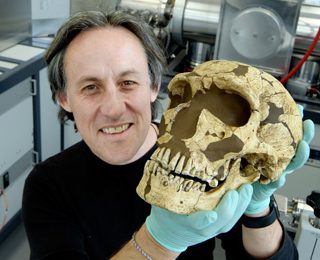Cleopatra’s sister remains missing
CSI methods show: Skull from the collection of the Department of Evolutionary Anthropology is not from Arsinoë IV An interdisciplinary research team led by anthropologist Gerhard Weber from the University of Vienna, together with experts from the Austrian Academy of Sciences, has analysed a skull that was found in the ruins of Ephesos (Turkey) in 1929. It was long speculated that it could be the remains of Arsinoë IV, the sister of the famous Cleopatra. However, the latest anthropological analyses show that the remains are those of a boy between the ages of 11 and 14 who suffered from pathological developmental disorders. His genes point to an origin in Italy or Sardinia. The results are currently being published in Scientific Reports. In 1929, the Austrian archaeologist Josef Keil and his colleagues discovered a sarcophagus completely filled with water in the ruins of the once magnificent "Octagon", a splendid building on the main street of Ephesos (Turkey). No significant grave goods were found in it, but a complete skeleton. Josef Keil only took the skull with him before the researchers closed the tomb on the important "Curetes Street" (Kuretenstraße) again. After his initial analysis in Greifswald (Germany), he assumed that the burial was that of "a very distinguished person" and probably a 20-year-old woman. Keil was unable to provide any hard…



